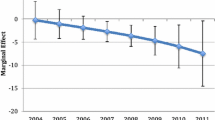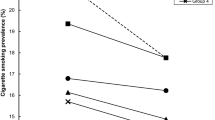Abstract
Data were collected from eight cities on a wide range of cigarette and smoker characteristics for a sample of smokers. Of these, 564 smokers had had fires and were identified through fire department response to those fires, while the other 1,611 smokers had not had fires and were identified through a telephone sample survey of the communities. The characteristics analyzed included those that had shown evidence of a relationship to the risk of a cigarette-initiated fire, either in laboratory studies or in previous statistical analyses of fire experience.
The smoker characteristics analyzed were household income, education, age, gender, and race. The cigarette characteristics analyzed were filter, tobacco column length, filter length, circumference, density, amount of tobacco, menthol, citrate, porosity, and pack type. In addition, a variable was used to control for the smoker's city.
After controlling for all smoker characteristics and city, logistic regression modeling showed four cigarette characteristics to be significant: filter, filter length, porosity, and type of pack. Filter, filter length, and porosity all affect air intake, which, therefore, appears to be an important physical element in the combustion process associated with risk. Analysis limited to filtered cigarettes only showed the same characteristics to be significant, plus tobacco column length. Extension of the analysis to two-way interaction terms did not change any of the conclusions on which cigarette characteristics are important, but it did indicate that the role of pack type was different for men and women.
Sensitivity analyses, shown in the appendix, supported the main conclusions that cigarette characteristics are significant after controlling for smoker characteristics and that the four specific cigarette characteristics—filter, filter length, porosity, and pack—are the ones that are significant. These analyses checked the impact of cluster sampling, sensitivity to missing data on smoker characteristics, and sensitivity to nonfire smoker cases with responses by people other than the smokers themselves.
All this means that there are already cigarettes commercially available that exhibit a reduced propensity for ignition when one controls for smoker characteristics.
Similar content being viewed by others
References
Technical Study Group of the Cigarette Safety Act of 1984,Toward a Less Fire-Prone Cigarette, Final Report of the Technical Study Group on Cigarette and Little Cigar Fire Safety, October 1987, p. 1.
Alison L. Miller,The U.S. Smoking-Material Fire Problem Through 1990, National Fire Protection Association, Fire Analysis and Research Division, Quincy, Mass., March 1993, p. 1.
Technical Study Group of the Cigarette Safety Act of 1984,Toward a Less Fire-Prone Cigarette, October 1987, Table 3, p. 8.
See, for example, Table 198 and the general population tables in Statistical Abstract of the United States: 1992, 112th edition, Bureau of the Census, Washington, D.C., 1992.
Norusis, Marija J.,SPSS Advanced Statistics User's Guide, SPSS Inc., Chicago, Ill., 1990.
Significance is defined as p<.05.
The city variable, as represented by the seven design variables, was found to be significant at p<.005.
SAS User's Guide: Statistics, SAS Institute, Cary, N.C., 1985.
The Wald chi-square is calculated by dividing the beta estimate by the standard error and squaring the result. Any p value equal to, or less than, .05 is considered significant.
Hosmer, David W. and Lemeshow, Stanley,Applied Logistic Regression, John Wiley and Sons, New York, N.Y., 1989.
Significance was evaluated by comparing model chi-square for Model 2 (main effects) to Model 2 plus the interaction of interest.
Eisenhower, Donna; Hall, John; and Brown, Randy,Self-Proxy Comparisons for the Cigarette Fire Safety Survey Final Report, submitted by Mathematica Policy Research, Inc., Princeton, N.J. to U.S. Consumer Product Safety Commission, Bethesda, Md., February 1993.
Author information
Authors and Affiliations
Additional information
This report was originally written as the final report in June 1993 as part of CPSC-P-91-1147 Contract “Cigarette Fire Incident Study” that the National Fire Protection Association conducted for the U.S. Consumer Product Safety Commission.
Harwood, formerly with the Consumer Product Safety Commission, is retired.
Rights and permissions
About this article
Cite this article
Karter, M.J., Kissinger, T.L., Miller, A.L. et al. Cigarette characteristics, smoker characteristics, and the relationship to cigarette fires. Fire Technol 30, 400–431 (1994). https://doi.org/10.1007/BF01039941
Issue Date:
DOI: https://doi.org/10.1007/BF01039941




